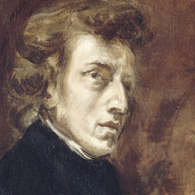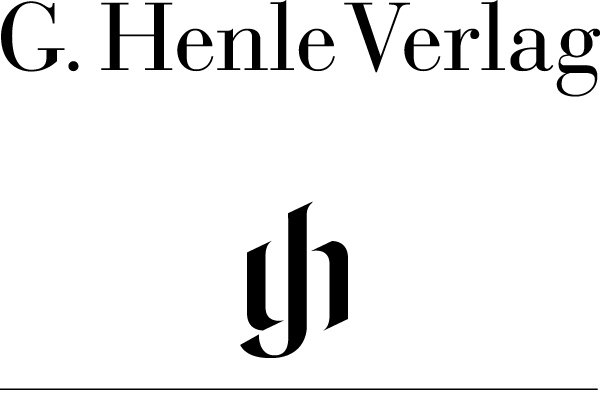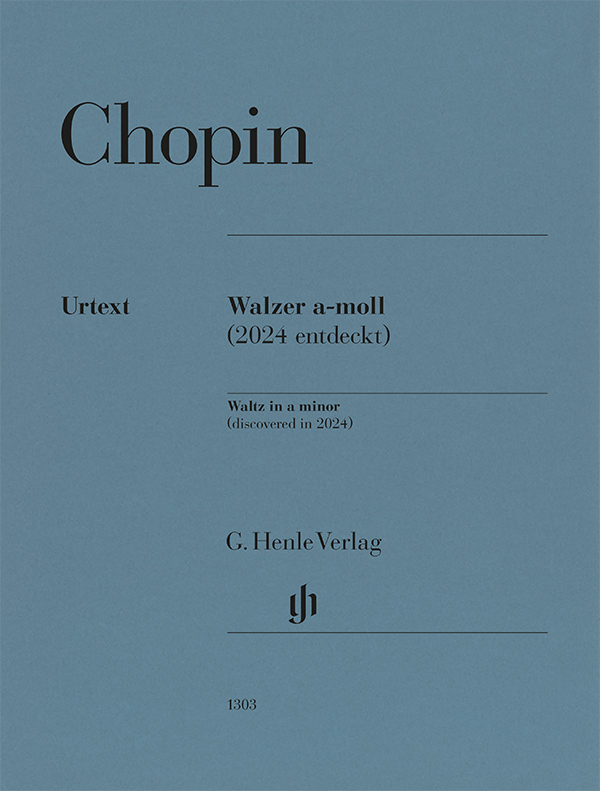Frédéric Chopin
Waltz a minor with facsimile
In autumn 2024, the Morgan Library in New York announced a sensation: in a legacy, curator Robinson McClellan had discovered a postcard-sized manuscript of a waltz in a minor with the inscription “Chopin”. Chopin experts all over the world have meanwhile scrutinized and confirmed the authenticity of the manuscript: undoubtedly an autograph by the Polish composer, it is moreover the short waltz of a hitherto unknown original work. Scholars and pianists have since then fallen into a waltz fever!
In close collaboration with the Morgan Library, G. Henle Publishers has the privilege to present the first Urtext edition of the new Chopin waltz: in addition to the musical text edited by Jeffrey Kallberg, it also offers a facsimile of the autograph. In his epilogue, the internationally renowned Chopin researcher provides fascinating observations concerning the genesis and intention of the small composition. We were able to engage star pianist Lang Lang, who introduced this sensational discovery to the world with his premiere recording, to supply the fingerings. A gem for all Chopin fans and piano aficionados!
mws-henle.cms.title-works.headline
mws-henle.cms-product-detail.composer-headline

Frédéric Chopin
Pianist and composer. His work is concentrated around piano music that enjoys extraordinary popularity and has become an integral part of the concert repertoire. His music influenced subsequent generations in France (Franck, Saint-Saëns, Fauré, Debussy) as well as Smetana, Dvořák, Balakirev, Grieg, Albéniz.
| 1810 | Born in Żelazowa Wola near Warsaw on March 1. First compositions at age seven, his first public performance at eight. |
| 1822 | Private instruction in composition. |
| 1825 | Rondo in C minor, Op. 1, his first published work. |
| 1826–29 | Studies at the Institute of Music in Warsaw. |
| 1829 | “Fantaisie sur des airs nationaux polonaise” in A major, Op. 13; Piano Trio in G minor, Op. 8. Travels to Vienna, where he gives two concerts of his compositions and improvisations. |
| 1829–33 and 1835–37 | Etudes, Opp. 10 and 25 -- a new type of virtuosic etude that also makes aesthetic demands. |
| 1830 | Premieres in Warsaw of his two piano concerti, Op. 21 in F minor and Op. 11 in E minor. |
| 1831 | Unable to return to Warsaw due to the Polish uprising, he goes to Paris, where he will remain until the end of his life. |
| 1832 | Debut concert in Paris to great acclaim. |
| 1835/38 | “Trois valses brillantes,” Op. 34. |
| 1836/39 | “24 Preludes,” Op. 28, in a cyclic succession: compactly-designed short pieces. |
| 1835/39 | Piano Sonata in B-flat minor, Op. 35, with the funeral march. |
| 1842/43 | Ballade No. 4 in F minor, Op. 52; “Grande Polonaise brillante” in A-flat major, Op. 53; Scherzo No. 4 in E major, Op. 54. |
| 1844 | Piano Sonata in B minor, Op. 58 |
| 1849 | Completion of the mazurkas in G minor and F minor. Death in Paris on October 17. |
Product Safety Informations (GPSR)

G. Henle Verlag
Here you can find the information about the manufacturer of the product.G. Henle Verlag e.K.
Forstenrieder Allee 122
81476 München
Germany
info@henle.de
www.henle.com
推荐
autogenerated_cross_selling




